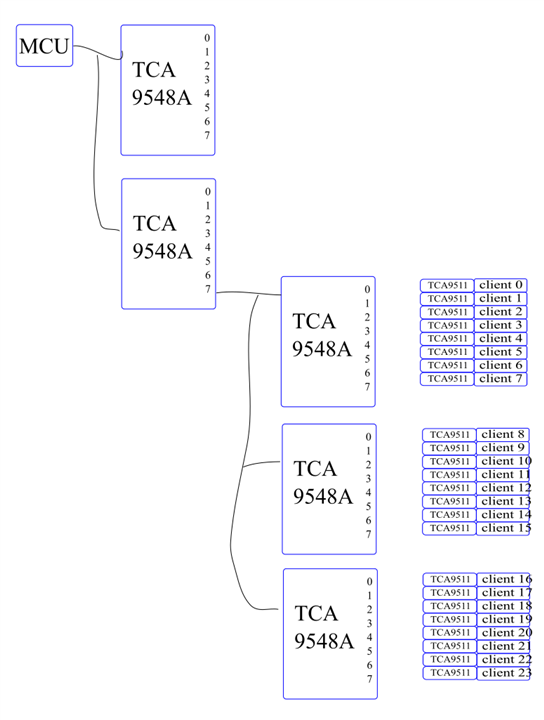Other Parts Discussed in Thread: TCA9511A
The first two TCA9548A is from the evaluation board, I want to use one of the I2C channel and further fan out to 24 slots. For each slot, I want to use one or more SI18IS606 to convert the I2C to SPI and also an EEPROM.
the board size will be ~300x100mm


Is such approach feasible?
Do I need TCA9511 before TCA9548A? If the 3 TCA9548A is about 100mm each?
How to estimate the capacitance here?


